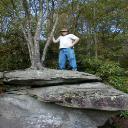Yahoo Answers is shutting down on May 4th, 2021 (Eastern Time) and the Yahoo Answers website is now in read-only mode. There will be no changes to other Yahoo properties or services, or your Yahoo account. You can find more information about the Yahoo Answers shutdown and how to download your data on this help page.
Trending News
Can you help with what I thought was an easy question?
With regard to an articulated tandem compound it is easy to determine which is the low pressure and high pressure cylinders.
But what about simple expansion articulated engines both under one boiler? Assuming a Yellowstone Whyte's arrangement 4-8-8-2, of which is the number one engine? Nearer the smokebox or nearer the fire?
Now, turn that around and we are talking about an SP cab-forward, a Yellowstone running in reverse. Are the number 1 and number 2 engines, as I am confident I can learn here, the same? Or, running reverse, the designation changes?
I've checked Baldwin, Lima and ALCO builder's info but I still do not know which is the number 1 engine and the number 2 engine in either case.
I appreciate the help.
2 Answers
- ?Lv 67 years ago
I am not especially familiar with US practice regarding steam locomotives, but logically I would expect that the cylinders nearest the smokebox (and hence the regulator valve and superheater header) would be the No. 1 engine. The engine further back under the boiler, and driving the rear coupled wheels in the main frame would be No. 2. I imagine that turning the engine around, as in the 'Cab Forward' type, would make no difference: No. 1 engine would still be at the smokebox end and No. 2 under the boiler, except that No. 2 would now be at the 'leading' end.
Source(s): Retired UK Train Driver, lifetime of interest - 6 years ago
The rearmost engine on a Mallet articulated was the high pressure one, and the front was low pressure. I suspect the engine nearest the engineer would be called #1, but not sure.



